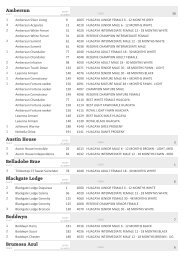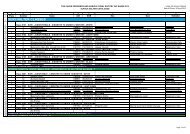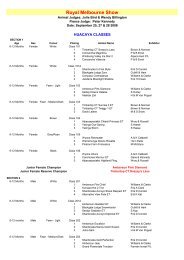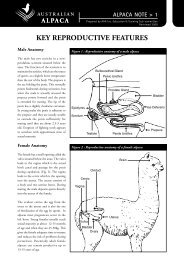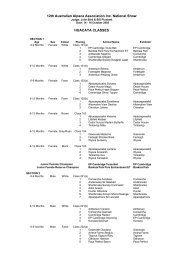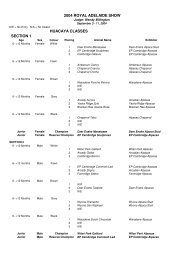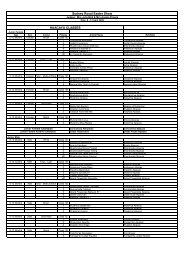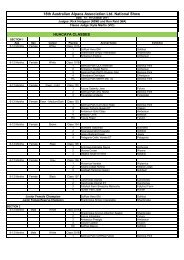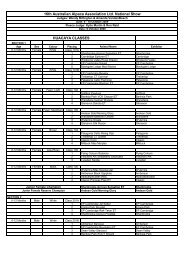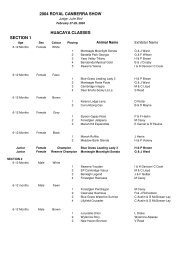Inheritance of White Colour in Alpacas - Australian Alpaca Association
Inheritance of White Colour in Alpacas - Australian Alpaca Association
Inheritance of White Colour in Alpacas - Australian Alpaca Association
You also want an ePaper? Increase the reach of your titles
YUMPU automatically turns print PDFs into web optimized ePapers that Google loves.
Tyrp1 produces an enzyme that acts <strong>in</strong> the melan<strong>in</strong> synthesis pathway (Figure 1.3) and is known<br />
colloquially as the “brown” locus. A mutated Tyrp1 causes brown eumelan<strong>in</strong> <strong>in</strong>stead <strong>of</strong> black. The<br />
recessive brown variant <strong>of</strong> Tyrp1 is found <strong>in</strong> dogs and mice, but does not exist <strong>in</strong> horses. It is possible<br />
that no brown alleles exist <strong>in</strong> alpacas because breed<strong>in</strong>g outcomes suggest that brown <strong>in</strong> alpacas is<br />
dom<strong>in</strong>ant, rather than recessive. It is also possible that the same phenotype (i.e. brown) can be caused<br />
by two different mechanisms <strong>in</strong> alpacas and that that both recessive brown and dom<strong>in</strong>ant brown<br />
(probably occurr<strong>in</strong>g at the agouti locus) exist.<br />
Figure 1.6: Comparisons <strong>of</strong> colour and pattern <strong>in</strong> different species.<br />
Two other genes, tyros<strong>in</strong>ase (Tyr) and membrane associated transporter prote<strong>in</strong> (Matp), may also be<br />
<strong>in</strong>volved <strong>in</strong> colour variation <strong>in</strong> alpacas. Tyr is the gene that produces the enzyme tyros<strong>in</strong>ase, which is<br />
the key enzyme <strong>in</strong> the melanogenesis pathway (Figure 1.3). In species such as mice, rabbits and cats,<br />
variants <strong>of</strong> Tyr are known to produce a dilution <strong>of</strong> colour, <strong>in</strong>clud<strong>in</strong>g alb<strong>in</strong>ism (Lamoreux et al. 2010).<br />
Matp is the gene that is mutated <strong>in</strong> palom<strong>in</strong>o and bucksk<strong>in</strong> horses (Mariat et al. 2003). It has been<br />
hypothesised that some white alpacas are the equivalent <strong>of</strong> cremello horses. That is, they are chestnut<br />
with two doses <strong>of</strong> the dilution gene caus<strong>in</strong>g a massive reduction <strong>in</strong> the <strong>in</strong>tensity <strong>of</strong> colour so that they<br />
appear white.<br />
The follow<strong>in</strong>g genes are hypothesized to have multiple variants <strong>in</strong> alpacas, and thereby cause colour<br />
variation: Agouti (A), Mc1r (E), Roan (Rn), Grey (M), Tuxedo (T), Piebald (P), Appaloosa. These<br />
genes can be broken <strong>in</strong>to two groups, those that affect the base colour <strong>of</strong> the animal (Mc1r and Agouti)<br />
and those that cause alterations to the base colour (grey, roan, tuxedo, piebald and appaloosa). Other<br />
genes are almost certa<strong>in</strong>ly affect<strong>in</strong>g colour, but these have not yet been identified, e.g. the gene(s) that<br />
6




